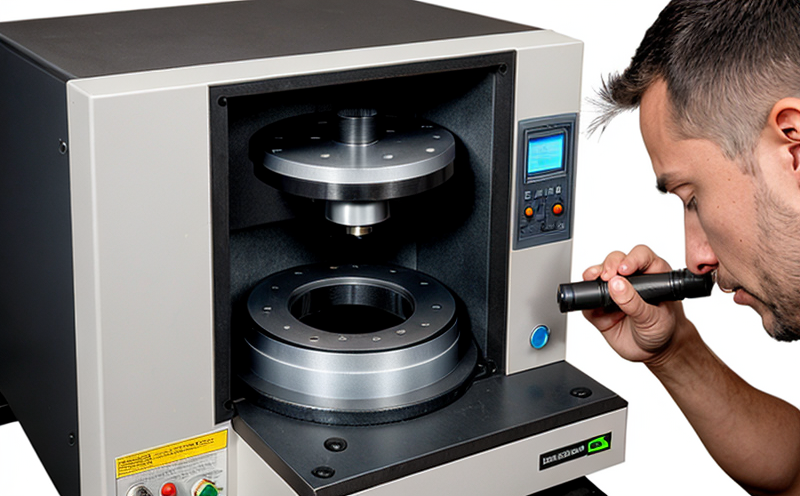ASTM E3 Metallographic Specimen Preparation Testing
The ASTM E3 standard is a cornerstone in metallography, providing comprehensive guidance on the preparation and examination of metallographic specimens. This service ensures that samples are processed consistently according to industry standards, allowing for accurate characterization of microstructures, which is critical for quality assurance, compliance, and R&D purposes.
The ASTM E3 process involves several key steps: sample selection, cleaning, etching, and polishing. Each step requires precision and expertise to ensure that the final specimen accurately represents the material's true microstructure. Cleaning removes surface contaminants, while etching enhances contrast between different phases of the metal matrix. Polishing ensures a smooth surface for accurate observation under a microscope.
The accuracy and repeatability of ASTM E3 testing are paramount in ensuring consistent results across multiple samples or over time. This is especially important in industries where material quality directly impacts product performance, such as aerospace, automotive, and medical device manufacturing. By adhering strictly to the ASTM E3 protocol, laboratories ensure that their findings are reliable and comparable.
Using advanced metallographic equipment like optical microscopes (OM) or scanning electron microscopy (SEM), we can visualize the finest details of a material's structure. This level of detail is essential for identifying defects, grain boundaries, precipitates, and other characteristics that influence mechanical properties and overall performance.
The ASTM E3 procedure also allows for the quantification of features like grain size, phase distribution, and porosity. These metrics are crucial inputs for material scientists and engineers who need to optimize alloys or troubleshoot production issues. By leveraging this standardized approach, we can provide actionable insights that drive continuous improvement in manufacturing processes.
Our expertise extends beyond just following ASTM E3; it includes understanding the broader context of metallurgical science and its applications across various sectors. For instance, in aerospace engineering, accurate metallography is essential for ensuring structural integrity under extreme conditions. In the automotive industry, it helps ensure that parts meet stringent durability requirements. Understanding these sector-specific needs enables us to tailor our services to meet client expectations more effectively.
The ASTM E3 process not only supports compliance with regulatory standards but also enhances a company's reputation for quality and reliability. Many industries rely on third-party laboratories like ours to validate their products' integrity, thereby reducing the risk of non-compliance penalties or recalls. Additionally, having compliant test results can be a key differentiator in competitive markets.
- Enhances confidence in product performance
- Supports regulatory compliance and quality assurance
- Provides critical data for R&D and process optimization
- Fosters trust among stakeholders and customers
Scope and Methodology
The ASTM E3 standard outlines a detailed procedure for preparing metallographic specimens, which includes several key steps:
- Sample selection based on the material type and testing objectives.
- Cleaning to remove surface contaminants using appropriate solvents or abrasives.
- Etching with specific reagents chosen to highlight different phases of the metal matrix.
- Polishing to achieve a smooth, reflective surface suitable for microscopic examination.
These steps are critical in ensuring that the specimen accurately represents the material's microstructure. The choice of etchant and polishing technique can significantly impact the final result, which is why we employ experienced technicians who follow ASTM E3 to the letter.
The use of high-quality optics and advanced metallographic equipment allows us to capture detailed images that provide precise measurements of grain size, phase distribution, and other microstructural features. This level of detail is essential for making informed decisions about material selection and process optimization.
Environmental and Sustainability Contributions
Incorporating ASTM E3 metallographic specimen preparation into your quality control protocols can contribute positively to environmental sustainability. By ensuring that materials meet the highest standards of integrity, we help reduce waste associated with non-compliant products or those that fail to perform as expected.
Accurate and reliable test results from compliant laboratories like ours enable manufacturers to make informed decisions about their production processes, which can lead to more efficient use of resources. For example, understanding the exact grain size distribution in an alloy can help optimize heat treatment cycles, reducing energy consumption without compromising quality.
The ASTM E3 process also supports lifecycle management by ensuring that products are robust enough to meet performance expectations throughout their service life. This reduces the need for premature replacement or repair, which is particularly beneficial in industries where equipment downtime can be costly.
Competitive Advantage and Market Impact
By offering ASTM E3 metallographic specimen preparation testing, we provide a competitive edge to our clients by ensuring that their products meet the highest standards of quality and integrity. This is particularly important in industries where materials performance directly impacts product reliability and safety.
- Enhanced Product Quality: Consistent ASTM E3 results ensure that your products are robust enough to perform reliably under expected conditions.
- Regulatory Compliance: Meeting ASTM standards demonstrates a commitment to quality and can be a differentiator in competitive markets.
- Informed Decision-Making: Accurate test data allows for better-informed decisions about material selection and process optimization, leading to innovation and cost savings.
The ability to provide compliant ASTM E3 testing can be a significant factor in gaining market share and maintaining a positive reputation among stakeholders. In an increasingly competitive global marketplace, having reliable third-party validation of your products' quality is more important than ever.





